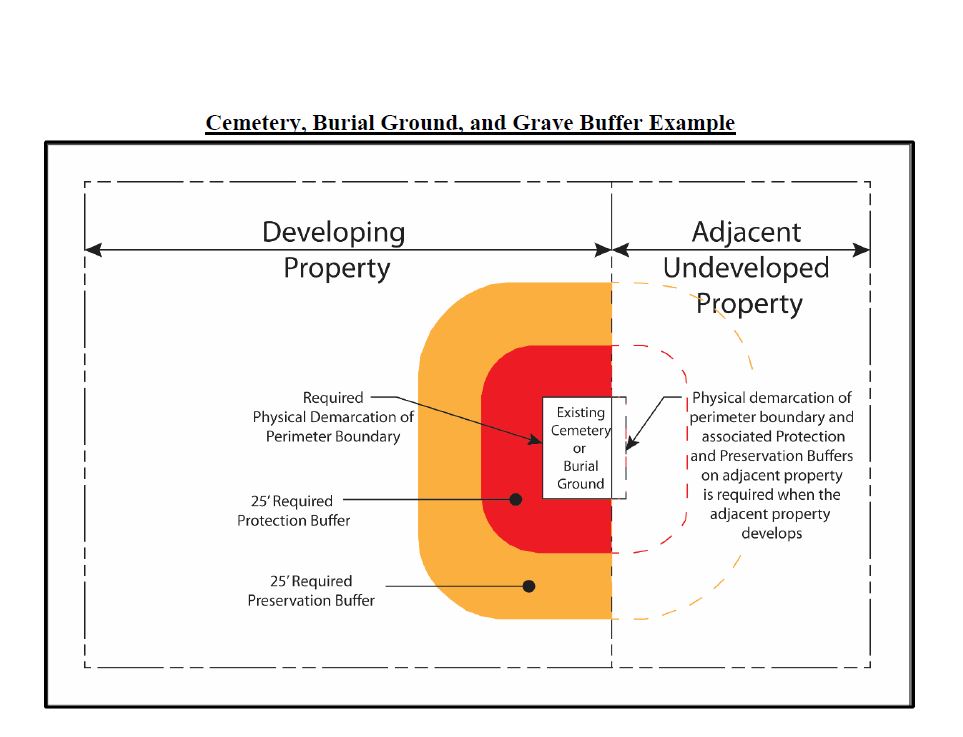Loudoun County, Virginia Amends Zoning Ordinance to Include New Requirements
The Loudoun County Board of Supervisors adopted amendments to the Revised 1993 Loudoun County Zoning Ordinance and the Loudoun County Facilities Standards Manual on November 21, 2019. Under these amendments, effective January 1, 2020, applicants will find new and more intensive requirements for archeological investigation and other changes pertaining to buffers and setbacks, planting, and landscaping. Currently pending plans submitted prior to January 1 – those accepted by the County and not withdrawn, expired, or otherwise invalid – are not subject to the amendments.
Cultural Resources
There are a number of amendments that address cultural resources and archeological investigations on properties proposed for development. The new regulations for burial areas may impact the proposed development plan.
- Initial submission of all site plan (STPL) and construction plans and profiles (CPAP) applications must now include Phase I archeological investigation reports. The new amendments also clarify that while systematic archeological testing (Phase IB investigation) is required within a project’s limits of disturbance (LOD), investigation of portions of developing properties outside the proposed LOD can be limited to the less intensive pedestrian reconnaissance (Phase IA investigation). Previously, Loudoun County required submission of a Phase I archeological investigation report with applications for Rezoning, Special Exception, or Subdivision, with some allowance for administrative decisions.
What is a Phase I?
The purpose of a Phase I Cultural Resources (Archeological) Investigation is to identify archeological and architectural resources within a project area and to provide a preliminary assessment of any resources found. The Phase I investigation can be divided into two sub-phases:
– Phase IA includes background research and pedestrian reconnaissance of the study area.
– Phase IB builds on the Phase IA and includes systematic archeological testing of the project area.
- When cemeteries, burial grounds, or graves are identified where development is proposed, the amended Zoning Ordinance
- requires archeological delineation of the boundaries and
- requires Treatment Plans for all cemetery, burial ground, and grave sites to demonstrate compliance with the ordinance.
- The amendments also created new standards for preserving historic cemeteries, burial grounds, and graves, including protective barriers during construction and easements. The new amendments require a 50-foot buffer, composed of a 25-foot Protection Buffer and 25-foot Preservation Buffer, surrounding cemeteries, burial grounds and graves.
- The Protection Buffer extends outward from the delineated boundary of the cemetery, burial ground, or grave.
- The Preservation Buffer extends outward from the Protection Buffer to provide additional separation from adjacent land uses and preserve the character of the cemetery.
- Cemetery buffer requirements will also apply to known graves or burial grounds on properties adjacent to the developing property and the County may require an archeological cemetery delineation on the developing property adjacent to such graves to provide evidence that no unmarked graves are present.
- The County will allow modifications to the Protection Buffer only through approval of a Minor Special Exception application by the Board. The Preservation Buffer may be modified by administrative waiver.

This image from Section 5-1405 of Loudoun County’s Revised 1993 Zoning Ordinance (as amended January 1, 2020) illustrates the required cemetery, burial ground, and grave buffer (from page 797).
Landscaping and Urban Forestry
Loudoun adopted a number of Zoning Ordinance amendments to dovetail regulations with the many modification requests that it had been receiving, with the goal of supporting “more desirable built outcomes.”* Some of the changes are noted below.
- Reforestation standards have been revised; reforestation is a means for satisfying “the Zoning Ordinance, a proffer, or a condition of approval of a special exception or variance.”** The amendments address plant density, seasonal installation, and maintenance/plant survival.
- Buffer Yard standards have been revised to promote year-round screening for data center developments adjacent to residential zoning districts or along collector or arterial roads.
- Proposed data centers will be required to plant the Buffer Yard with at least 40% and no more than 70% of the required plant units as evergreen trees, an effort to decrease data center visibility year-round.
- The minimum height of screening trees at time of planting has increased from six to eight feet.
- Road Corridor Buffer Yards will now be required for properties adjoining certain roads and road classifications
- The amendments established a “Plant Unit” system for calculating the plant density and quantity in Buffer Yards.
We’re here to help!
WSSI can work with you to determine how these amendments can impact your projects. Please contact Boyd Sipe or John Mullen regarding archeological or cultural resources issues, and Dillon Conner and Cary Hulse to discuss landscaping and reforestation.
* from the November 21, 2019 Board of Supervisors Business Meeting Action Item #5 memo, page 3
** from Section 7.305 “Reforestation Standards” in Loudoun County’s Facilities Standards Manual as amended through January 1, 2020
